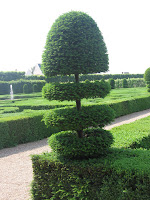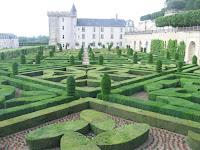Chateaux de Villandry .... The Gardens on the East Side
...... Click on any photograph and it will enlarge to full screen size .....



| Chateaux de Villandry ....The Gardens on the north side ... Click on any photograph and it will enlarge to full screen size ..... To see a Photograhic Actuality month after month, find the various facets of the castle and the garden ofVillandry. See the website: http://www.chateauvillandry.com/sommaire.php3?lang=en&PHPSESSID=10fa7e5c248e5ac8de77495536c3dd96         |
| .... See the Overall Layout at: hChateux de Villandry .... The Buildings ....http://www.chateauvillandry.com/visite.php3? d_rubrique=13&lang=en&id_article=137&lang=en .... Click on any photograph and it will enlarge to full screen size ..... Villandry was completed toward 1536 and was the last of the large chateaus built in the Loire Valley during the Renaissance. _____________________________________________ |
________________________________